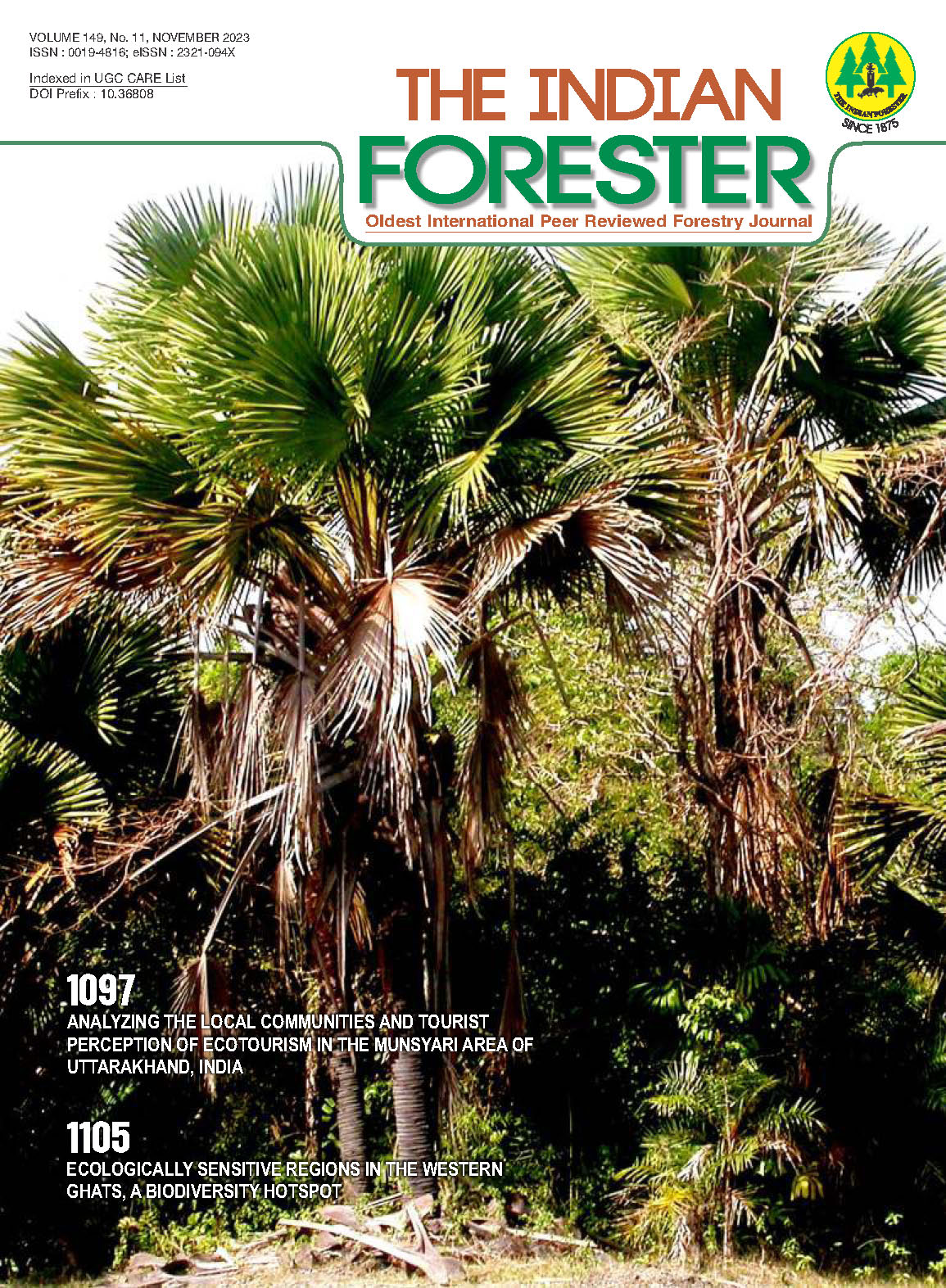Effect of Alternanthera Species as Host Plant on Growth Performance of Seedlings of Indian Sandalwood (Santalum album L.) in Nursery
DOI:
https://doi.org/10.36808/if/2023/v149i11/169514Keywords:
No Keywords.Abstract
No Abstract.References
Annapurna D., Rathore T.S. and Joshi G. (2006). Modern nursery practices in the production of quality seedlings of Indian sandalwood (Santalum album L.) – stage of hostrequirement and screening ofprimaryhost species. J.SustainFor.,22:33-55.
Barber C.A. (1902). The natural history of sandal trees. Indian Forester, 28(9): 340 - 341.
Barrett D.R., Fox J.E.D., Doronila A.I. and Surata K. (1996). Desmanthus virgatus (L.) Willd. An efficient intermediate host for the parasitic species Santalum album L. in Timor, Indonesia. Journal of Sustainable Forestry, 3: 13 -23.
Deepa P. and Yusuf A. (2015). Histological and biochemical evaluation of Santalum album L. Seedlings cocultivated with different hosts. Annals of Plant Sciences, 4(03): 1016-1021.
Fox J.E.D. (2000). Sandalwood: the royal tree. Biologist, 47: 31-34.
Kulkarni H.D. (1995). Studies on variations and tree improvement aspects of sandal (Santalum album L.). Mysore university.
Nagaveni H.C and Srimathi R.A. (1985). A note on haustoria-less sandal plants. Indian Forester, 111(8): 615–618.
Radomiljac A.M. (1998). The influence of pot host species, seedling age and supplementary nursery nutrition on Santalum album Linn. (Indian sandalwood) plantation establishment within the Ord River Irrigation Area, Western Australia. Forest Ecology and Management, 102: 193-20.
Rama Rao M. (1911). The host plants of sandal trees. Indian Forester, 2(4): 159-207.
Rangaswamy S. and Griffith A.L. (1939). Host plants and the spike disease of sandal. Indian Forester, 65(6): 335-345.
Rocha, Ashokan, Santhoshkumar, Anoop E.V. and Sureshkumar P. (2014). Influence of Host Plant on the Physiological Attributes of field-grown Sandal tree (Santalum album). Journal of Tropical Forest Science, 26: 166–172.
Rukmana R.H. (1999). Cultivation of Peanut Gude. Canisius, Yogyakarta. Sastyrapraja, S. 1980.
Scott J. (1871). Notes on Horticulture in Bengal. No.2. Loranthaceae, the mistletoe order, their germination and model of attachment. J. Agric. Hort. Soc. India, 2(2): 287.
Tesitel Jakub, Lenka, P. and Duncan, D.C. (2010). Interaction between hemi-parasitic plants and their hosts. Plant signalling
Downloads
Downloads
Published
How to Cite
Issue
Section
License
Unless otherwise stated, copyright or similar rights in all materials presented on the site, including graphical images, are owned by Indian Forester.





